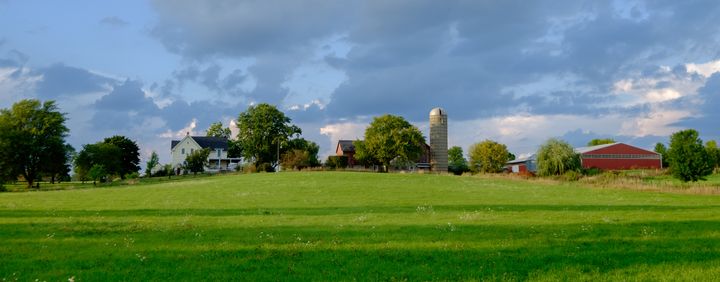
Sales of organic products saw double digit growth last year, yet only 1 percent of the U.S. land base is certified organic.
As millions of Americans take a much-deserved pause to join family and friends during this holiday season, it goes without saying that our tables will feature traditional homemade recipes passed down through generations. From turkey and ham to vegetarian and vegan dishes, many of us will enjoy sustainably grown and responsibly harvested food from local farms and ranches across the country. By all accounts, “farm to table” is front and center this holiday season.
The local food sector is valued at $12 billion and is growing 9 percent a year. However, our farmers are getting older, and we’re losing family farms to development. Sales of organic products saw double digit growth last year to $43 billion. That’s five percent of all food sales. However, only 1 percent of our land base is certified organic. And it may be too costly for farmers to increase that land base significantly. If we’re to be successful, we need to focus on a system-wide approach that includes land conservation, the farmers and ranchers, and markets. And if we want to really move the needle, we’re going to need leadership from business—and all of us as customers—to help drive change. We need to help address the lack of supply at scale.
Unfortunately, many of our working lands are at risk; small and mid-sized farms are disappearing fast. In the next five years, more than 90 million acres of farmland will be sold because of changing demographics. That’s 10 percent of U.S. farmland up for sale—twice the size of the state of Missouri. Who will buy these farms? Who will grow our food?
Consider the following: A 2015 study by the Farmland Information Center showed that states invested $105 million in one year to protect farm and ranch land but spent $108 billion—about 1,000 times more—on highways.
In order to protect the farmer, we’ve learned you need to protect the land. And often, that also requires investing in entrepreneurs who can grow the market to keep up with rising demand.
For example, since 1993, The Conservation Fund has provided more than $22 million in bridge financing to local land trusts to conserve 100 family farms. In New England, that equates to 10,000 acres of permanently protected farmland across the Connecticut River Valley. These lands provide fresh fruits and vegetables to Boston Public Market, a 28,000-square foot permanent, year-round indoor market providing only locally-sourced food to the public, the first of its kind in the country.
On the West Coast, Lundberg Family Farms is a third generation family farm whose motto is simple: “leave the land better than you found it.”
In the 1930’s Albert Lundberg witnessed the Dustbowl that resulted from poor soil management and short-sighted farming techniques. After moving the family to Northern California’s fertile Sacramento Valley, he impressed upon his four sons the need to care for the soil.
Today, Lundberg Family Farm’s Certified Organic and Eco-Farmed rice is grown with a concern for the environment. In addition to operating a sustainable farm, the company is keenly aware of the connection between working lands, sustainability and its customers.
It’s a recognition that sustainability and common sense need to go hand in hand.
The same thinking must be applied to seafood production. By 2050 we will need to double the global food supply to feed the world’s population. In the U.S., much of our seafood is a far cry from local; more than 90 percent is imported. We need access to high-quality, healthy and locally-sourced seafood so we can provide for our families and put less pressure on our oceans.
To meet this challenge, The Freshwater Institute is pioneering technology, research and development to redefine fish farming—on land—to provide fresh, locally grown fish. It has developed a sustainable system and fish feed that does not use wild-caught fish meal. Fish are not treated with antibiotics or hormones, and the technology can be used anywhere.
When it comes to the rise of local and organic food, we can choose to make a change for good. We need to preserve the land that food is grown on, support the farmers and businesses that grow, process, and distribute our food, and strengthen the markets that serve local communities across the country. As we reflect with family and friends during this holiday season, let’s continue to build on this progress so that future generations can enjoy even better access to local, healthy food than we do today.
